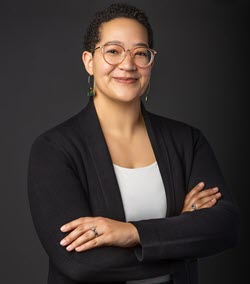
Improving diversity, equity, and inclusion (DEI) has long been a goal in clinical trials, in order to ensure that research findings apply to the general US population, among other key benefits. Government agencies related to healthcare have made DEI a priority, with the FDA announcing draft guidance for diversity and inclusion in clinical trials in April 2022. The guidance outlines how the makers of drugs and medical devices, including diagnostic tests, can develop a “Race and Ethnicity Diversity Plan” to ensure better representation of historically underrepresented groups in clinical trials of their products. The requirement to include such a plan for most US clinical trials was made law through legislation passed at the end of 2022. However, developing DEI plans will likely present device makers with a variety of challenges. Rachel Rangel, AuD, a clinical trial specialist at Curavit Clinical Research, discusses IDEA, a new toolkit the company launched in June 2023 to help drug and device makers meet federal diversity and inclusion requirements for clinical trials.
Q: How does IDEA improve the existing process clinical trial designers would have to go through?
A: Many organizations do not have an established roadmap to improve diversity in clinical trials. Now that the FDA requires a Diversity Action Plan with the submission of new drug and device applications for clinical trials, organizations must have a plan in place to recruit and retain diverse populations or provide justification for why they do not.
Many organizations do not know where to begin. The aim of IDEA is to make it easier for sponsors to create effective and timely plans to ensure that their trials are diverse and equitable from the beginning. IDEA can tackle everything from assessing traditional barriers to entry and gaps in health equity, planning creative recruitment strategies, designing a trial to give participants the utmost autonomy and respect, to tracking enrollment data and being prepared to address gaps in representation.
The IDEA program can be tailored to offer as much or as little support as a sponsor requires. For example, recent work we did for a digital therapeutics customer involved identifying underrepresented populations that would be important to include in their study, taking into account the inequitable burden of the target disease among minority populations, and weighing other key factors to provide a curated list of sites across the country that would have the greatest chance of enrolling and retaining participants from diverse cultural and ethnic backgrounds. This sponsor did not require a full FDA Diversity Action Plan, but they sought our input to make their trial design as inclusive as possible.
Q: What is the importance of DEI planning in clinical research?
A: Diverse participation in clinical research means that, ultimately, we can better determine the effectiveness and safety of medications, medical devices, digital therapeutics, and other forms of treatment across different populations. This leads to a clearer understanding of potential biological, environmental, and behavioral factors that impact the health of different populations, enables discovery of treatments that are more personalized, and most importantly, plays a crucial role in addressing persistent health disparities in the United States.
Planning is absolutely essential to achieving equitable representation within clinical trials. So many times, details that may seem inconsequential at first, such as unnecessarily strict inclusion and exclusion criteria, long travel distance to a site, or inflexible hours can negatively impact the participation of people from underrepresented groups. Forming meaningful connections with community organizations and building trust within communities is not possible overnight—it requires a lot of upfront considerations. Employing diverse and culturally competent site staff can be a significant advantage for recruiting and retaining diverse participants. These are all factors best addressed during the planning stage, rather than while the trial is already underway or has concluded.
Q: Why is DEI planning uncharted territory? What was required prior to this news announcement?
A: DEI planning in clinical trials is less uncharted territory rather than under-explored. Diverse and equitable representation in clinical trials has been often discussed but rarely achieved. One of the reasons for this is most likely that it does require a significant amount of work and time to identify the elements that are required for a trial to be considered a DEI “success.” To get the IDEA toolkit off the ground, we first had to take time to assess our areas of strengths as an organization and areas where support from others would be valuable. We needed to seek out and learn from community partners who are doing the “work on the ground” to get underrepresented populations familiar with and excited about participating in clinical trials. We had to look past our own assumptions about why diversity in clinical trials has been so lacking and instead compile the evidence—reading reports, journal articles, and attending forums and expert panels. Readying the IDEA program required months of dedicated time and preparation work and now ongoing learning that most clinical trial planning teams do not have to spare.
Q: What are the top challenges posed by DEI plan implementation?
A: Operationally, two of the biggest challenges include patient recruitment and retention. Traditional trials at physical sites can limit recruitment to specific geographical areas or only to participants who have the time and resources to travel. It also limits awareness that the trial is even happening—a key reason cited for lack of minority participation in clinical trials. Similarly, patient retention can be hurt if participants cannot sustain long-distance travel. They may not be able to make a site’s limited hours fit in with work or family obligations. Decentralized trials eliminate some of these site-based limitations.
Societal challenges include gaps in awareness and education surrounding participation in clinical trials and hesitancy to engage in clinical trials due to past or current mistreatment by the medical establishment. Historic abuses in the United States such as the Tuskegee syphilis study and the coercive sterilization of Indigenous and other minority women in the 1970s are often cited as reasons for lack of diverse participation in clinical research. This history is crucially important to understand when undertaking research with historically underrepresented communities, but the power of patient education and inviting people to participate should not be underestimated. Many times, a patient’s trusted physician can be an entry point into clinical trials, but in communities that lack access to routine medical care, this is not a viable strategy. Community outreach groups are critical in reaching and forming relationships with communities that may have historically been excluded from clinical trials. Given these challenges, it has never been more apparent that improving diversity and equity in clinical trials requires thoughtful, evidence-based, and purposeful planning from the very beginning. This is where Curavit’s IDEA program can make a major impact.
